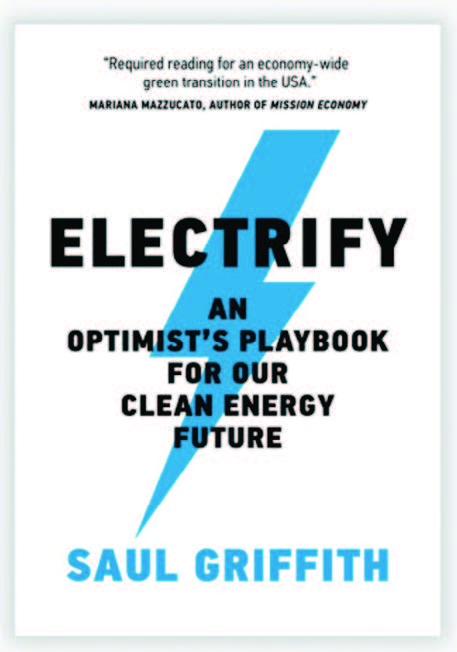An optimistic–but realistic and feasible– action plan for fighting climate change while creating new jobs and a healthier environment: electrify everything.
Climate change is a planetary emergency. We have to do something now—but what? Saul Griffith has a plan. In Electrify, Griffith lays out a detailed blueprint— optimistic but feasible—for fighting climate change while creating millions of new jobs and a healthier environment. Griffith’s plan can be summed up simply: electrify everything. He explains exactly what it would take to transform our infrastructure, update our grid, and adapt our households to make this possible. Billionaires may contemplate escaping our worn-out planet on a private rocket ship to Mars, but the rest of us, Griffith says, will stay and fight for the future.
Griffith, an engineer, and inventor, calls for grid neutrality, ensuring that households, businesses, and utilities operate as equals; we will have to rewrite regulations that were created for a fossil-fueled world, mobilize industry as we did in World War II, and offer low-interest “climate loans.” Griffith’s plan doesn’t rely on big, not-yet-invented innovations, but on thousands of little inventions and cost reductions. We can still have our cars and our houses— but the cars will be electric and solar panels will cover our roofs.
For a world trying to bounce back from a pandemic and economic crisis, there is no other project that would create as many jobs—up to twenty-five million, according to one economic analysis. Is this politically possible? We can change politics along with everything else.
Editor’s Comments: If you are concerned about climate change and wondering what you can do personally beyond the reduce, reuse, and recycle mantra, this is the book for you. Griffith’s plan for combating climate change is deceptively simple: stop burning fossil fuels by electrifying everything.
Like any simple plan, its execution faces the age-old adage “the devil is in the details”, and Griffith’s plan is no exception. There are political, economic, and technical hurdles facing the electrify everything movement. But, and this is why this book is worth the read, Griffith calls on individuals to electrify everything in their daily lives, and in so doing, could reduce America’s emissions by 42%. That is a major reduction that can sidestep all political and technical hurdles. Yes, there are economic considerations when switching to electric cars, furnaces, stoves, and water heaters. Still, each one of us can plan our own path to a fossil fuel-free lifestyle. You and I can make a difference if we so choose.






